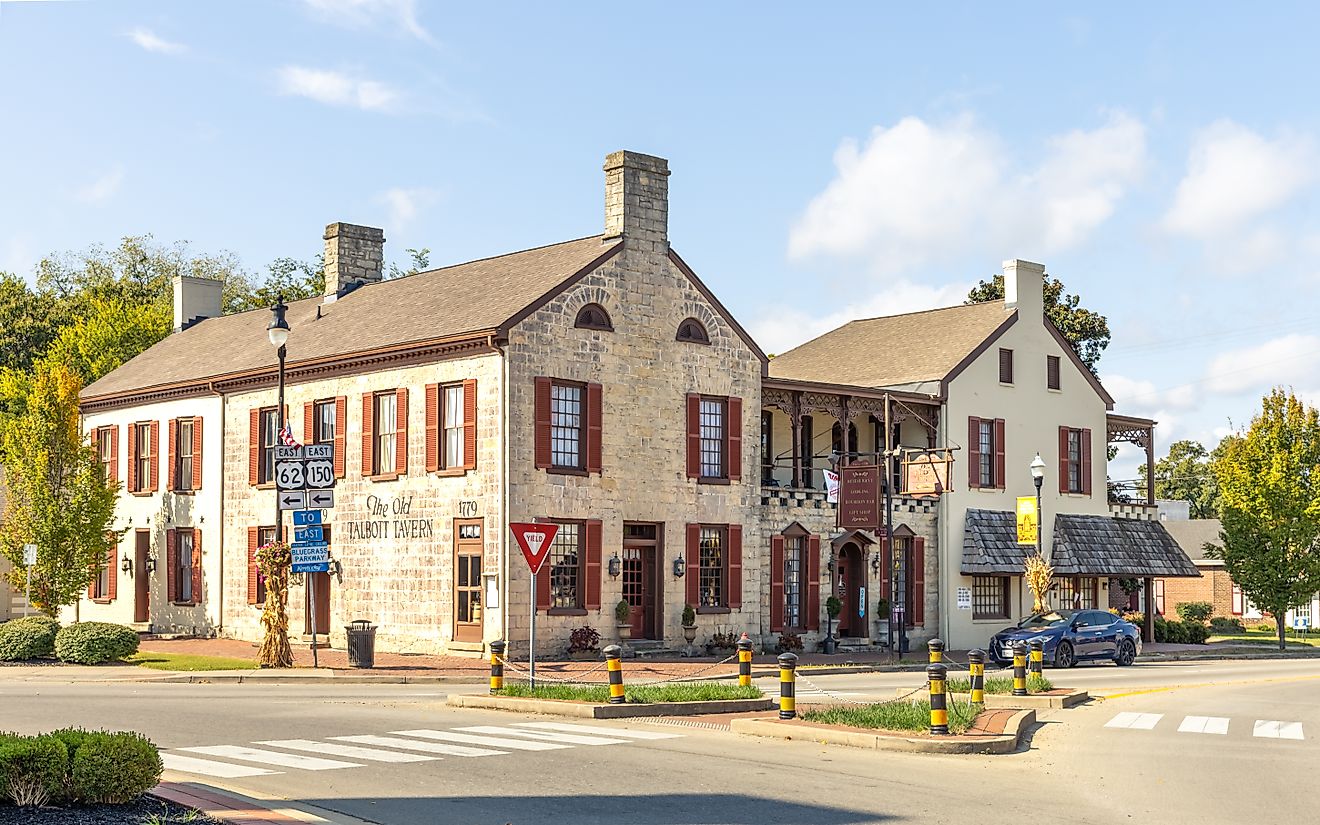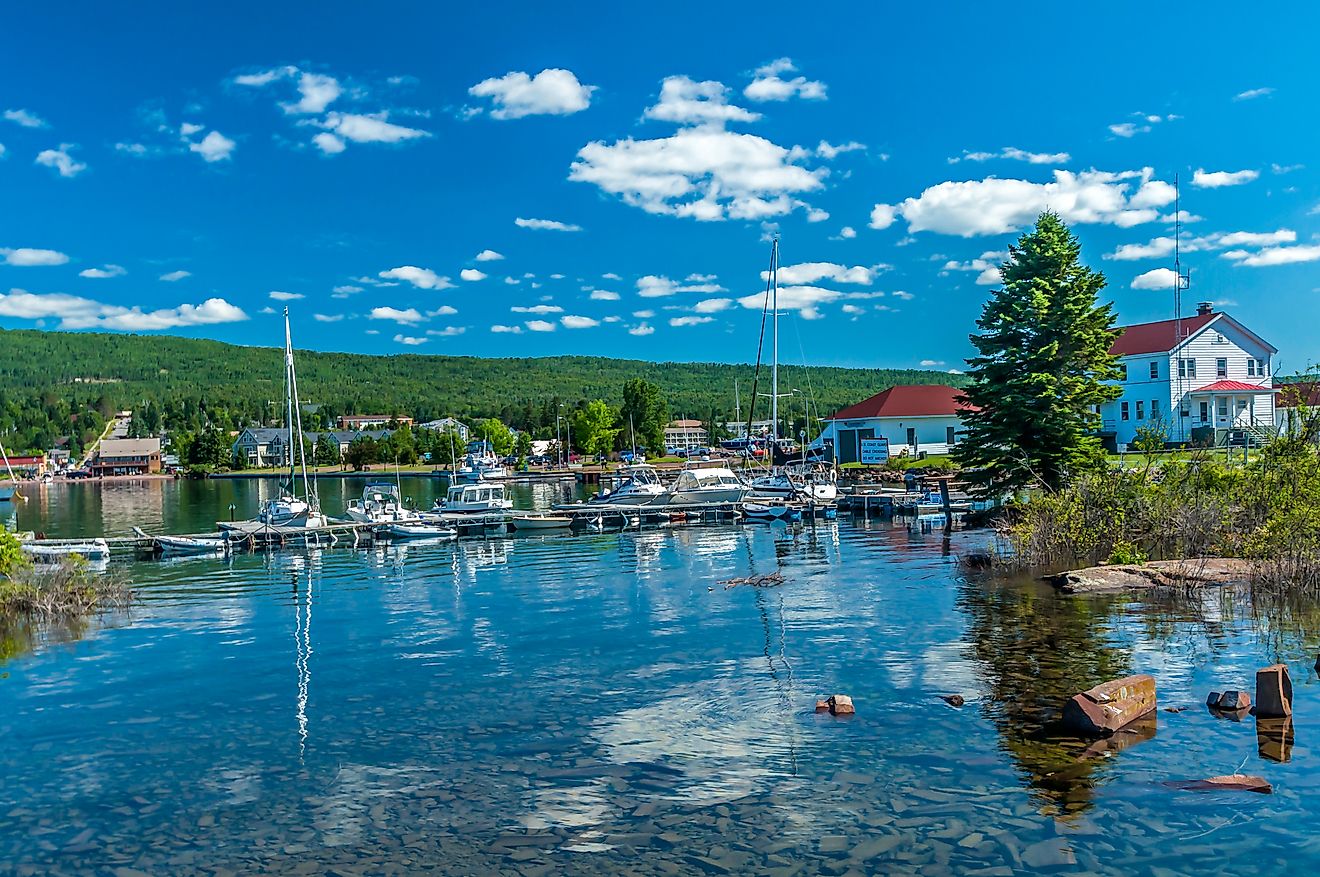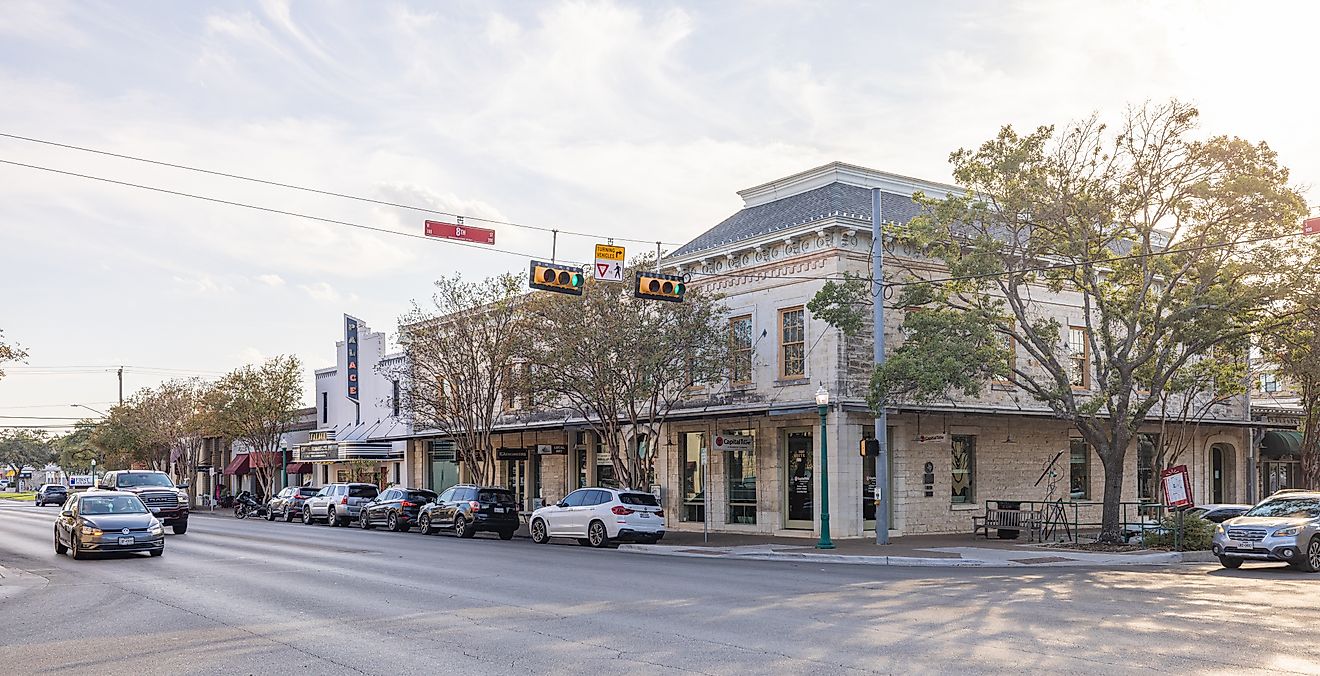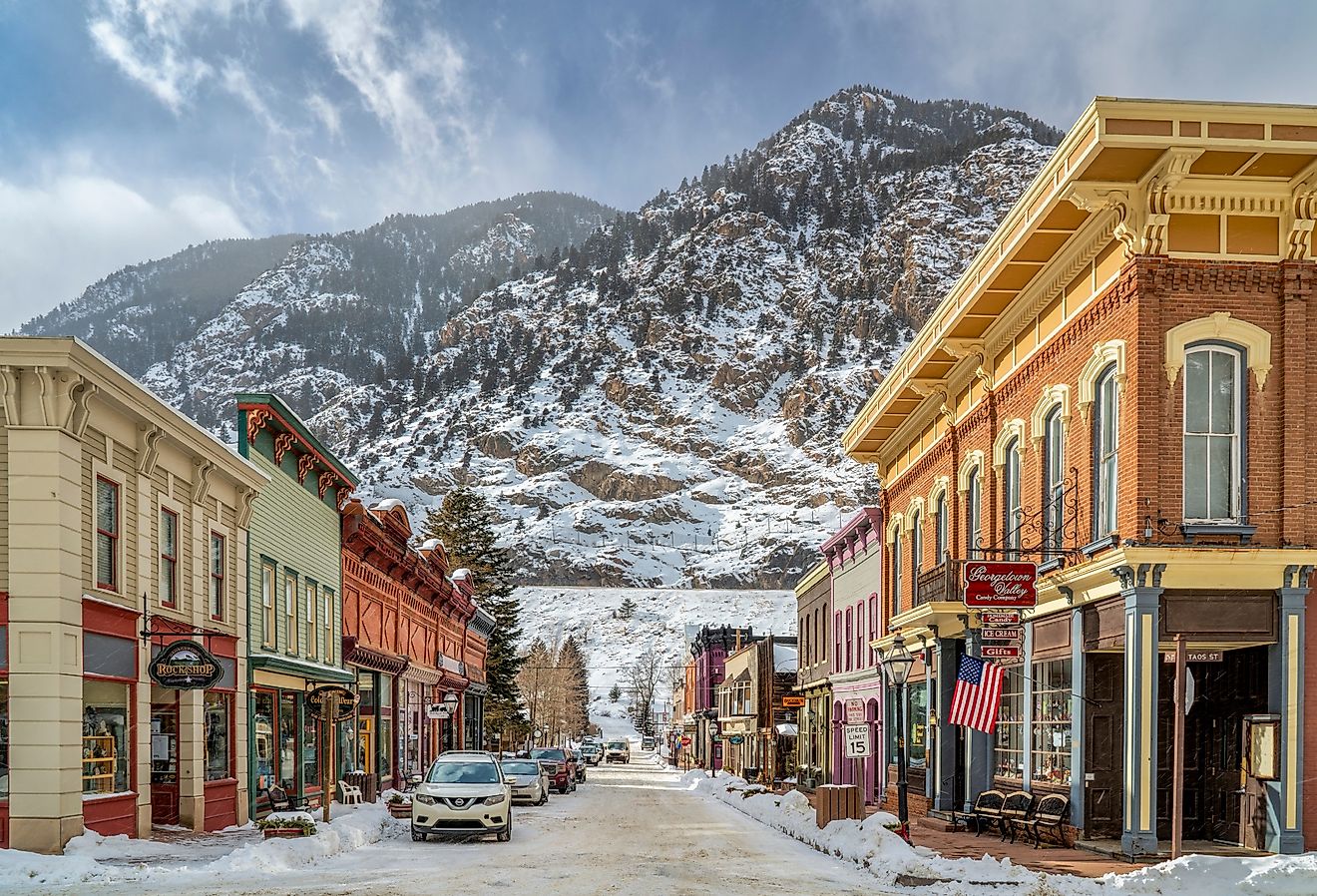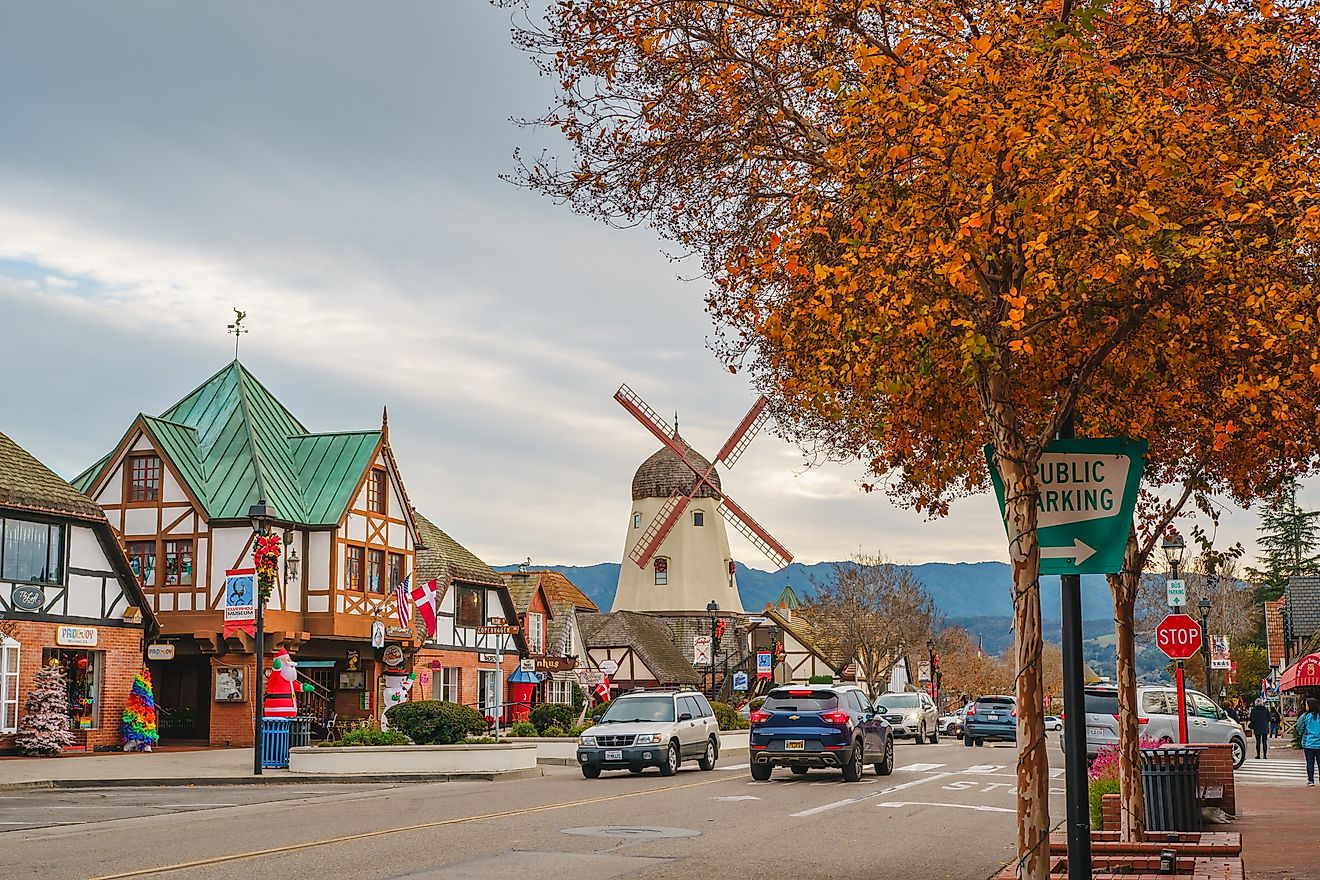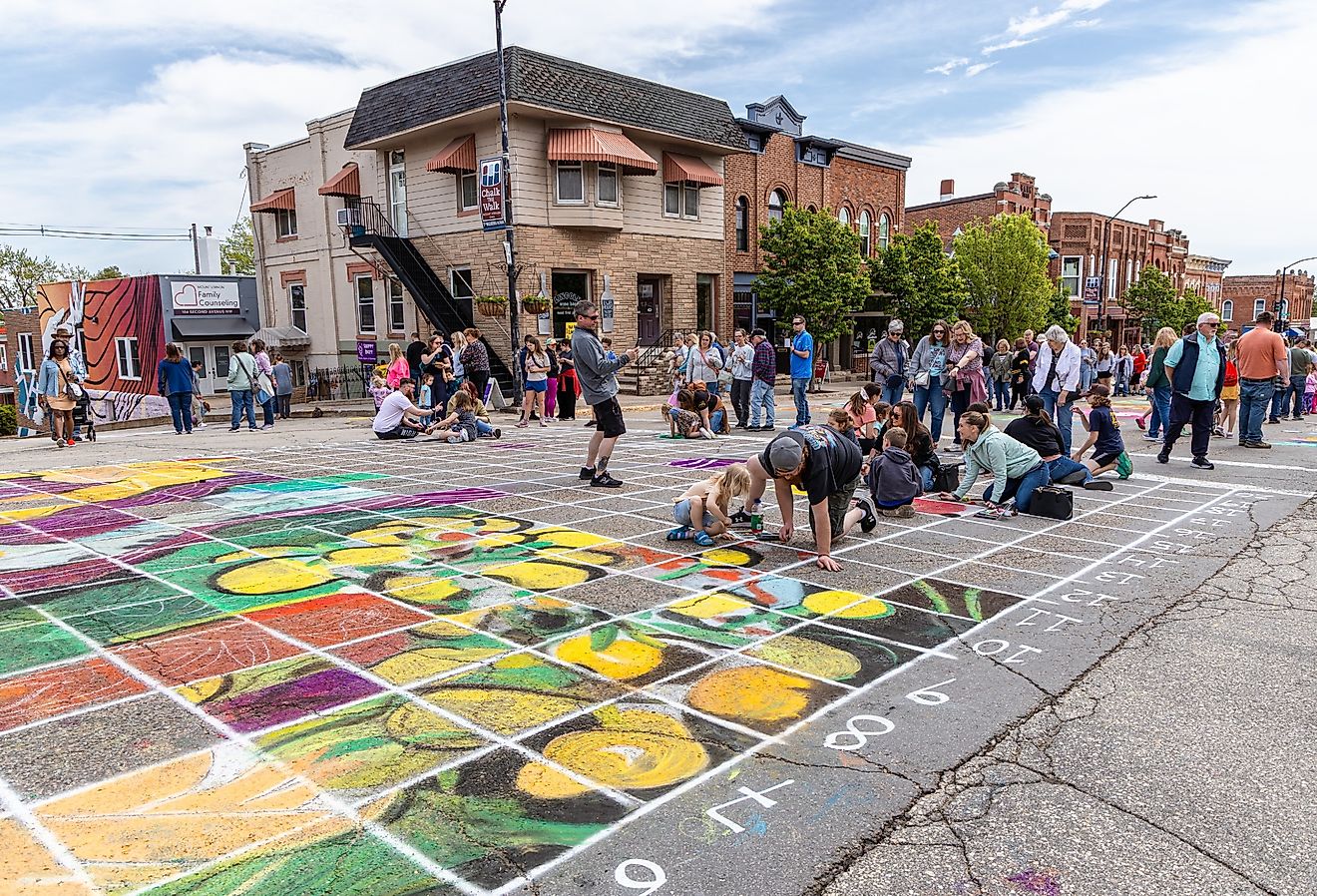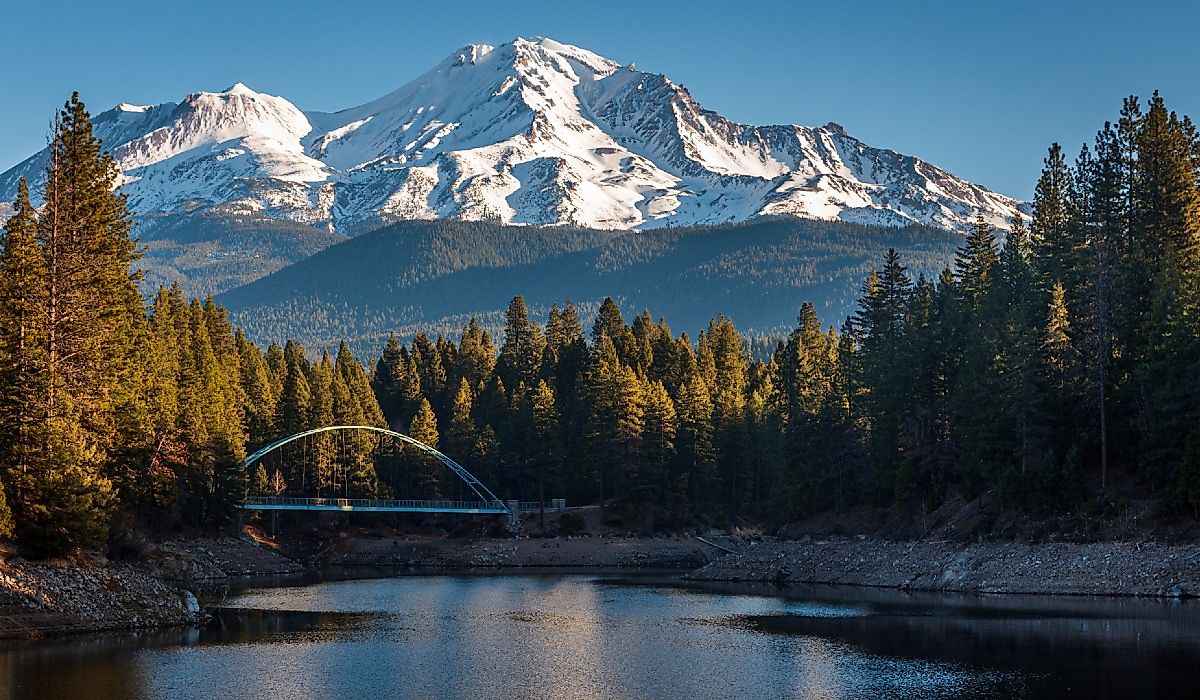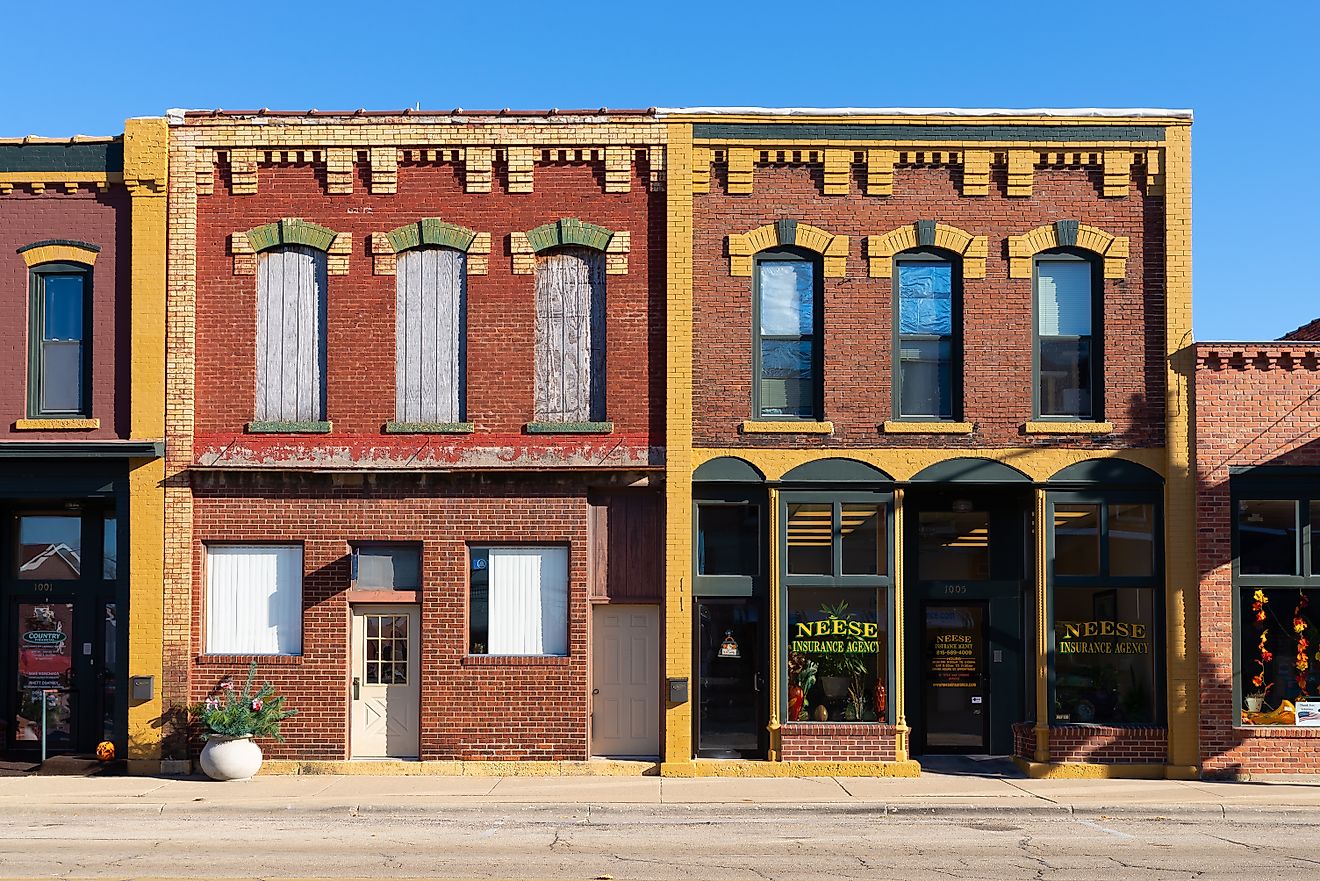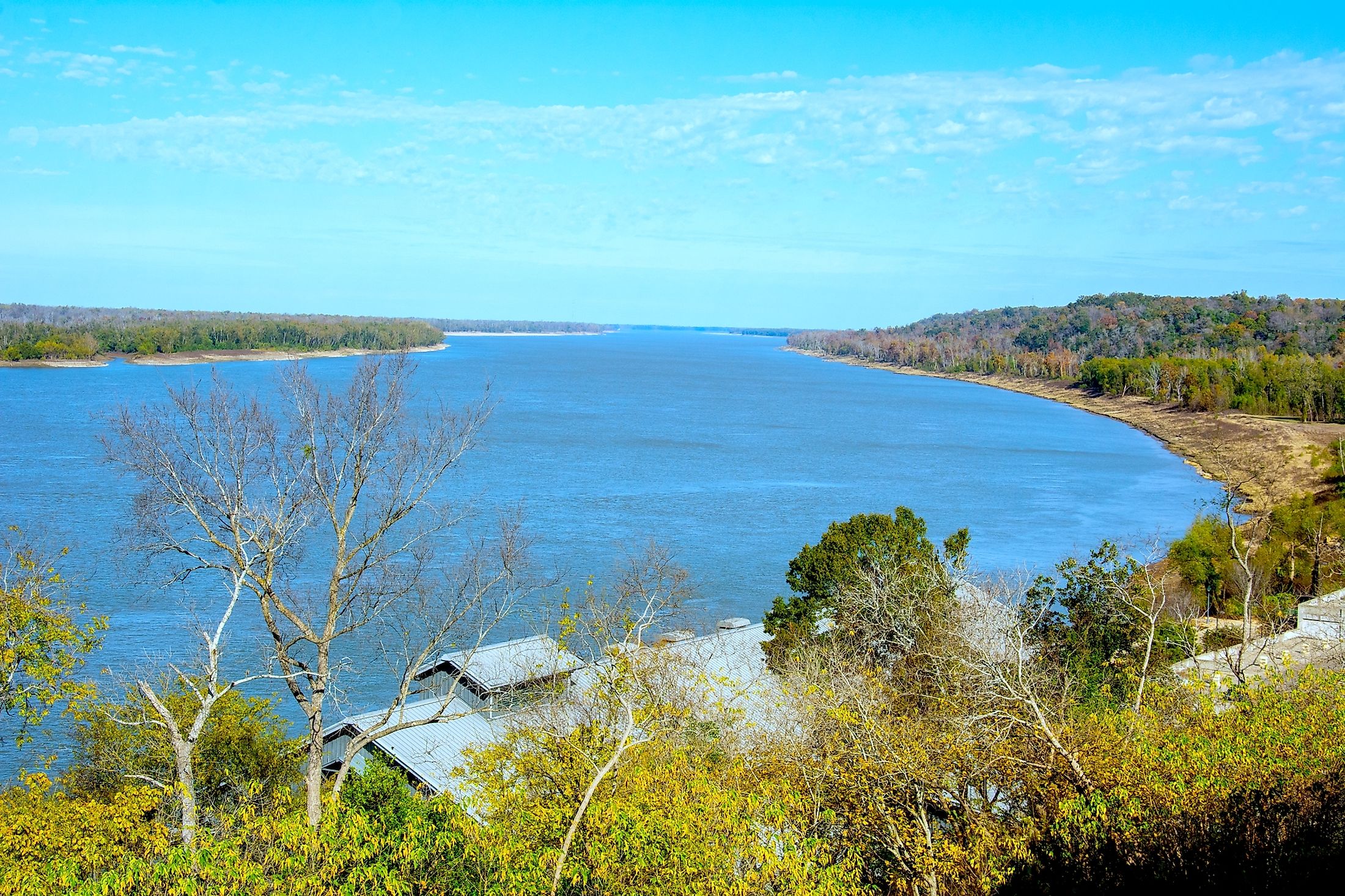
These Small Towns in Mississippi Come Alive in Fall
Named after the majestic river whose waters anchor the region, Mississippi (meaning "big river" in the Ojibwe language) is a southern state whose landscapes and terrains take on a unique charm in the fall. While its northern counterparts are more commonly associated with the colors of the changing season, many of Mississippi's forests brighten with the colors of fall later on in an equally stunning way.
But the shifting colors are just the beginning of Mississippi's glorious fall scenes. Hike a scenic spring-fed lake at Wall Doxey State Park or the depths of the Pine Belt at Paul B. Johnson State Park. From the Mississippi River to the pine-dotted ridges in the De Soto National Forest, these small Mississippi towns come alive in the fall, offering a gateway to some of the state's most breathtaking natural attractions.
Natchez
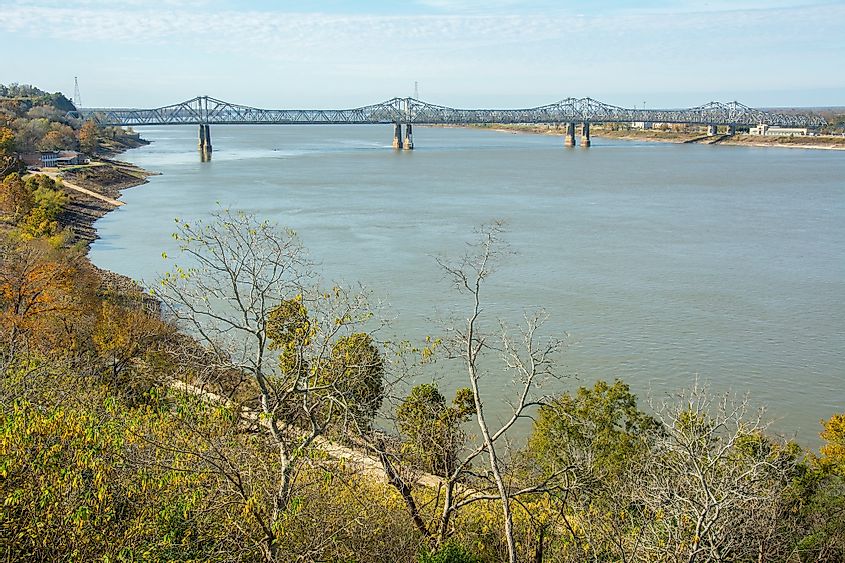
Depending on where you start, the town of Natchez can be the beginning or grand finale of one of the most scenic road trip routes in the United States: the Natchez Trace Parkway. This 444-mile roadway is famous for its origins as an Indigenous game trail, and today, it serves as one of the most picturesque routes to take a road trip in America, leading through Mississippi, Alabama, and Tennessee, with the town of Natchez as its home base. Many agree that autumn is the best season to take the route–more specifically, in mid to late October–when the greenery is transformed with reds, golds, and browns.
A visit to Natchez also brings its own splendor. The town is settled on a bluff overlooking the Mississippi River. Almost 200 feet high, the views overlooking the mighty Mississippi are partly why the town is such a hot tourist spot, welcoming almost 700,000 guests each year. Hike the ever-popular Natchez Bluff Trail for the best views of the river below, illuminated with the season's bordering foliage. Once you have taken in the views from above, descend the 200-foot staircase to the bluff's base for an even closer look at the river.
Tishomingo
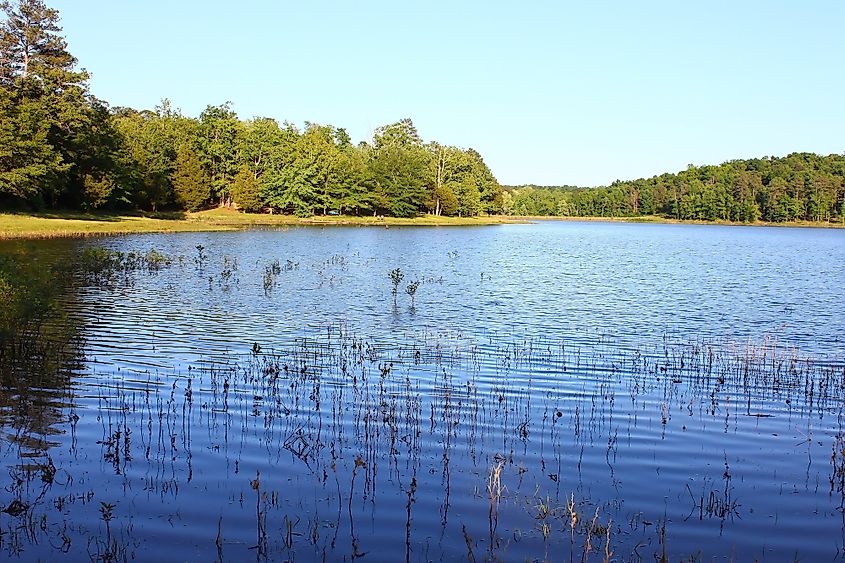
To explore more of the state's best fall hikes this season, look no further than the town of Tishomingo. Nestled in the foothills of the Appalachian Mountains, the town is home to Tishomingo State Park, the largest State Park in Mississippi. For just $2USD entry per person (children five and under enter free), you get access to epic rock formations, forested hillsides, and around 13 miles of nature trails.
The trails have varying degrees of difficulty, but all offer their own unique blends of nature and terrain. For a longer, rugged path, hike the 3-mile Flat Rock trail for views of the massive, mossy rocks and spring-fed streams. The forest's hickory trees are yellow in the fall and contrast beautifully with the crimson-red oaks scattered throughout. The CCC Pond Trail, on the other hand, offers a much shorter, smoother 0.74-mile stroll around the pond, whose vibrant wildlife and natural springs would enchant any hiker.
Oxford
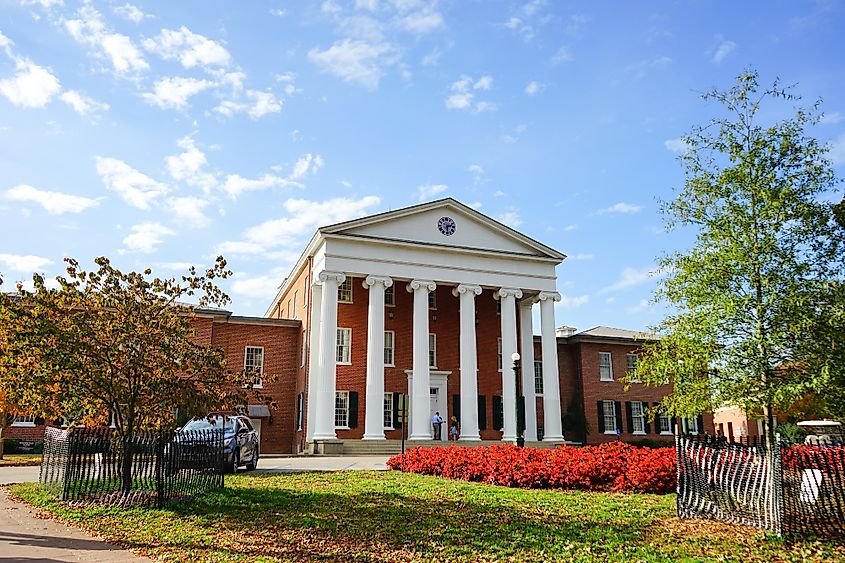
If the northern autumn passes you by too quickly, the town of Oxford is a prime example of Mississippi's delayed yet dazzling transition to fall. Named one of "America's best towns for fall colors" by Travel and Leisure, this friendly northern community has its peak fall foliage more towards the end of October into early November. For that reason, Oxford is the perfect destination for procrastination-prone nature enthusiasts or anyone hoping to get a few final glimpses of the season before the leaves fall.
To savor Oxford's seasonal sights, make your way to Puskus Lake Recreation Area. Locals would suggest trekking the easy 1-mile trail along Puskus Lake for the best views of the surrounding foliage or even bundling up for a lakeside picnic. Alternatively, Lamar Park is another popular Oxford nature area, ideal for taking in nature's reds and golds. With walkways surrounding the humble yet quaint Lake Patsy and guiding through intricate gardens, the park's beauty would entangle any autumn lover.
Holly Springs
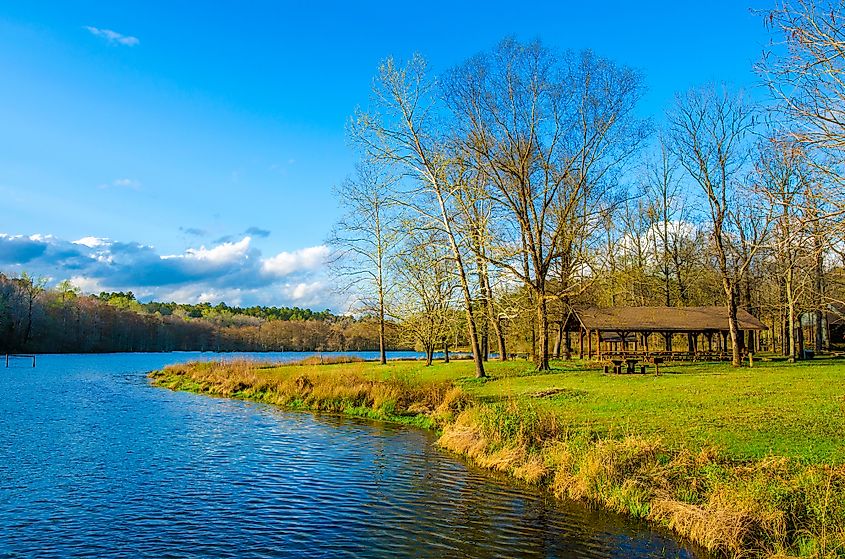
A little over 30 minutes north of Oxford, the town of Holly Springs offers the same allure of a delayed fall season. This popular retirement town, while small and quaint, has a pretty tremendous culture connected to its nature. William Randolph, the town's founder, even named the community after the holly shrubs that once thrived in the area, along with the abundance of natural springs–some of which still flow into the town's 60-acre spring-fed lake in Wall Doxey State Park.
Wall Doxey invites its visitors to hike the borders of Spring Lake for unbeatable views of northern Mississippi's seasonal flora. The 2.5-mile wooded hike offers a rugged path and can generally be completed in an hour or less, but with views this spectacular, you may just want to walk it twice. To extend your adventure, travel east to the nearby Holly Springs National Forest to explore the wonders of its 155,000 acres, including popular hiking paths along the 260-acre Chewalla Lake.
Hattiesburg
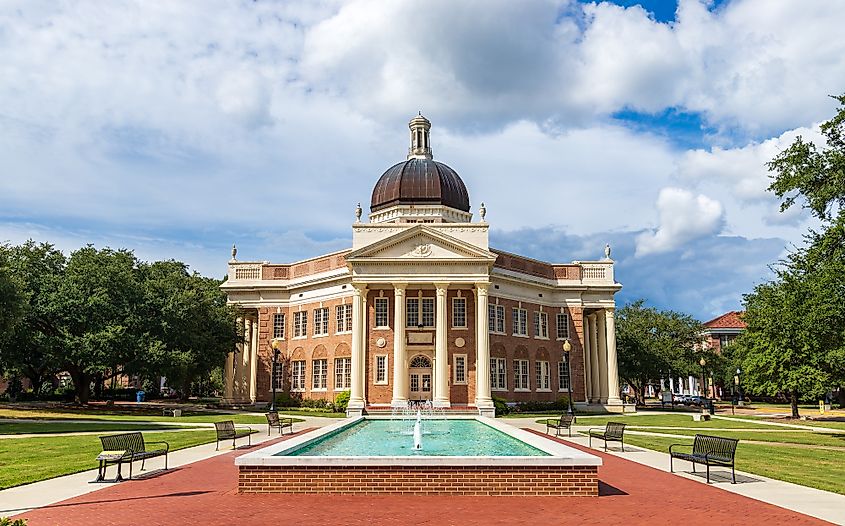
Making your way to southern Mississippi, Hattiesburg is an underrated community with a unique combination of fall foliage at Paul B. Johnson State Park. What truly sets the park apart and makes it worth visiting is its location in the heart of Mississippi's Pine Belt, or "Piney Woods," whose names come from the region's abundant pine trees. Paul B Johnson State Park is no exception, with towering loblolly and long-leaf pines growing throughout.
But if you are still after the colors of fall, have no fear: this Pine Belt forest is also home to dogwoods and oaks, their reds and browns mingling beautifully with the pines. Hike the borders of Geiger Lake, a sparkling 225-acre freshwater reservoir within the park, to take in the smells, sights, and sounds of the season. As of 2022, Hattiesburg's population sits at just under 48,500, making this the perfect getaway option for anyone looking for a mix of a spirited population with the charms of small-town hospitality and spectacular nature.
Morton
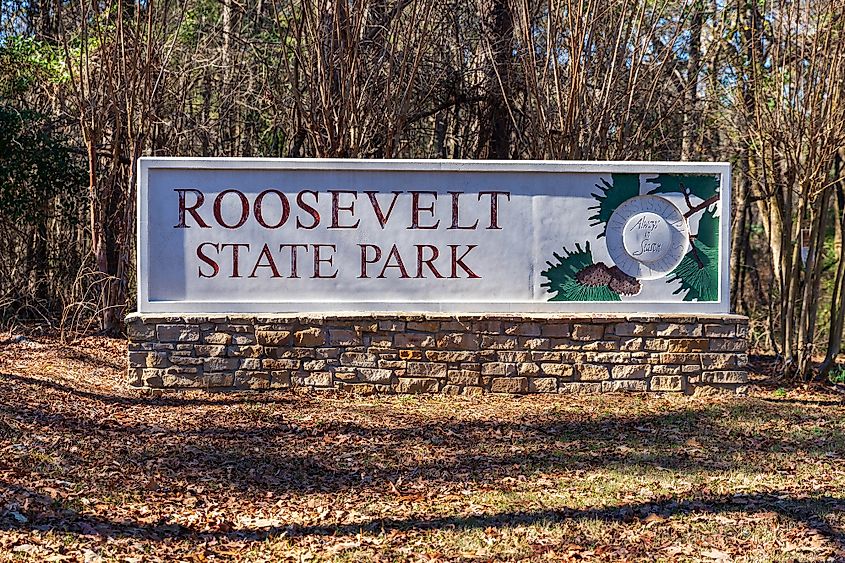
If a quieter park experience is what you are after, try your luck at Roosevelt State Park in Morton, Mississippi. With around 3,500 residents as of 2023, Morton is a fantastic choice for those seeking out a more secluded and blissful nature getaway. In addition to the beautiful 150-acre freshwater Shadow Lake, the park also offers stunning panoramic views overlooking the Bienville National Forest and autumn hardwoods dotting the hills below.
For views of Shadow Lake, hike the 0.4-mile Lakeview Trail, but keep in mind that this is one of the park's busier areas. For a more secluded path, the Rolling Hills Trail offers the perfect chance for solitude amongst the trees. But if you find yourself craving more than Roosevelt State Park's 4.8 miles of trails, Morton is just a short drive from the aforementioned Bienville National Forest, whose vast 178,400 acres will ensure a more private hike. Witness centuries-old shortleaf pines and loblolly trees by hiking the 2-mile section of forest in the 89-acre Bienville Pines Scenic Area.
Brooklyn
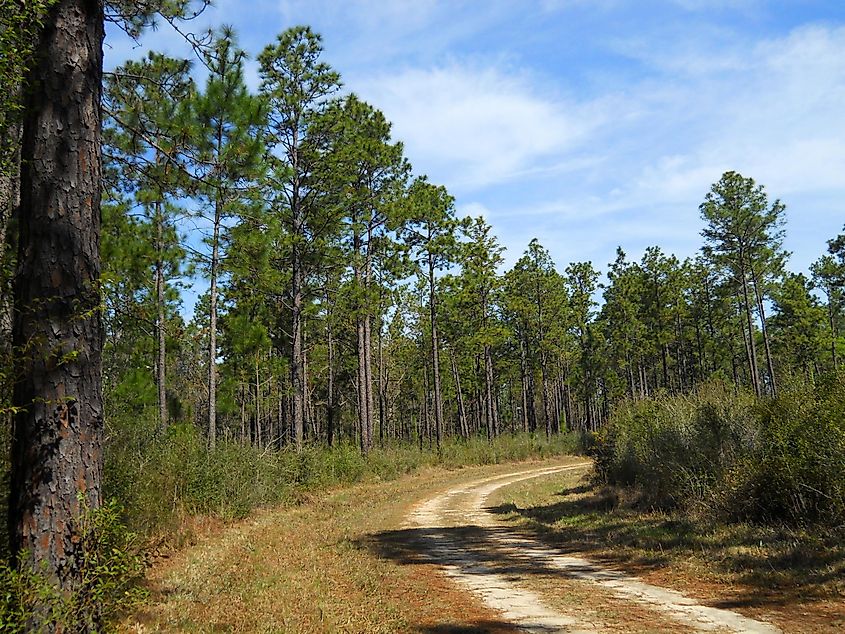
Not to be mistaken for the famous New York City borough, the tiny unincorporated community of Brooklyn, Mississippi, may be small, but it draws big crowds with its main attraction: the De Soto National Forest. Named after the Spanish explorer who originally mapped out the area in the 1500s, this southern national forest was heavily impacted by the logging industry up until the 20th century. But thanks to preservation efforts, today, the forest is thriving–especially in the fall. Brimming with streams and pine-covered ridges, the park is not only one of Mississippi's greatest national forests but also its largest.
Spanning 518,587 acres, the trails within its two designated nature areas (Black Creek and Leaf River Wilderness) are as vast as they are beautiful. Popular hikes include the Black Creek Hiking Trail, whose 39 miles follow the Black Creek River and offer a look at the park's diverse flora, along with over 100 storybook bridges and boardwalks. Luckily, the massive trail can be experienced in sections. Access the path from one of the various other trails, like the Black Creek Trailhead or Big Creek Landing.
Ackerman
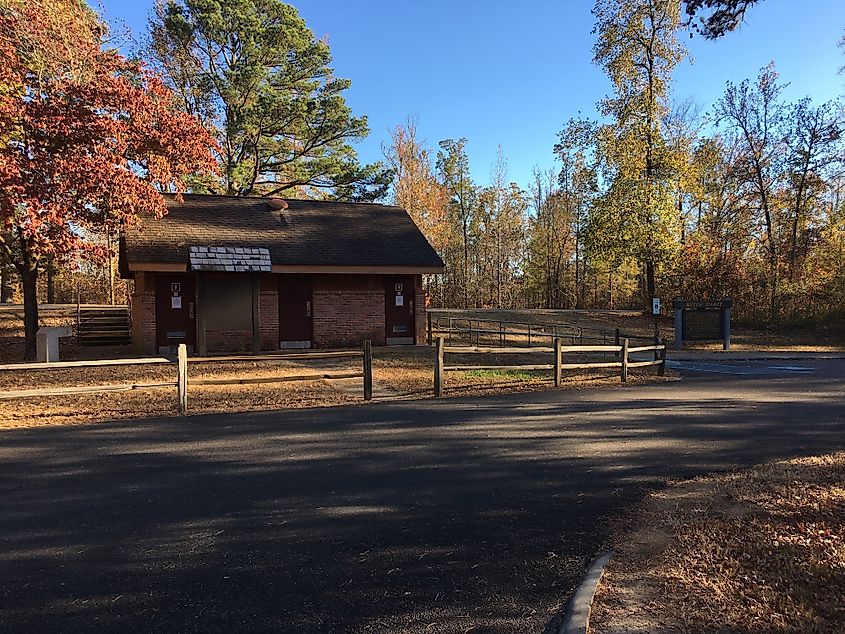
Heading back to northern Mississippi, in the town of Ackerman, you can find the small yet mighty Tombigbee National Forest. With 128,000 acres of parkland, while the forest lacks De Soto's size, its history and natural beauty make up for it tenfold. The forest was once made up of abandoned farmland left disfigured by the region's mining history and other industries, making its current landscape that much more impressive. Through the efforts of the National Forest Company, for the last 25 years, the land has been transformed into the fairytale forest it is now.
Areas like the Witch Dance Horse Trail embody the park's splendor, guiding hikers and horseback riders through streams and a mix of pine and hardwood forest. The trail is also accessible through the previously mentioned Natchez Trace Parkway via the Witch Dance Trailhead, making this a popular road trip stop in the fall. Other favored sections of the park include the Choctaw Lake Recreation Area, its 3-mile hiking trail encircling the lakeshore.
Columbus
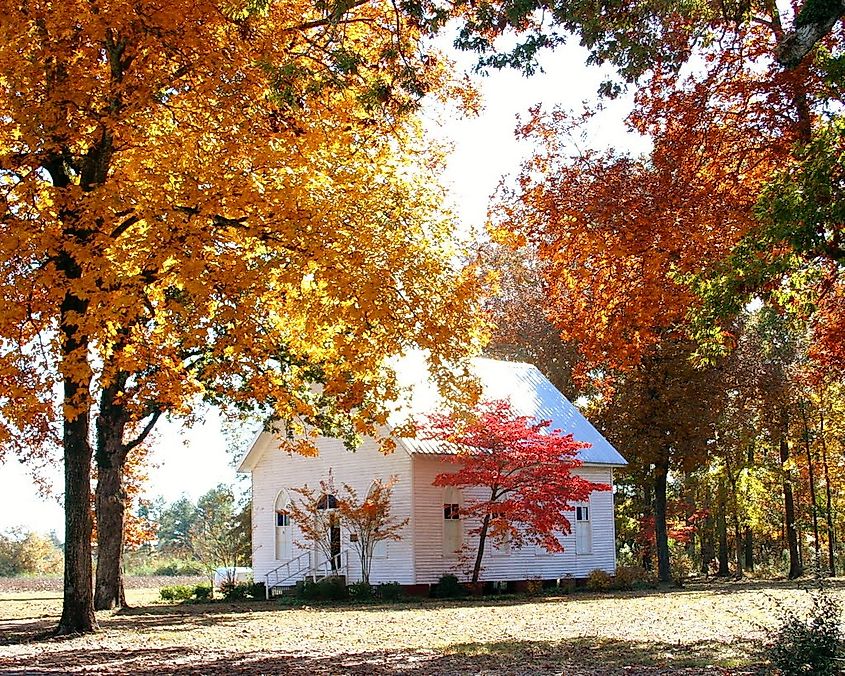
As the weather cools, Columbus, the "Friendly City" (and one of the oldest founded Mississippi towns) beckons families and solo travelers alike with the promise of infinite recreation and sights at Lake Lowndes State Park. Its 150-acre freshwater lake features a stunning Loop Trail that takes people an average of 1.5 hours to complete, and the tree-lined shores are truly a sight to behold in the fall.
But one of the lake's other main appeals in the fall season would be its abundance of largemouth bass and anglers. While some may associate fishing with summertime, Mississippi's fall season is actually one of the best times to fish. As temperatures slowly drop, the fish become more active in their search for food. So while Lake Lowdnes has its share of summer crowds, fishing is at its best (and most popular) from September through October.
While Mississippi is often overlooked as a fall destination due to its southern setting, it comes with its own seasonal perks and wonders that are definitely worth exploring. Whether taking advantage of the season's spirited fishing holes or opting to hike their borders, these small Mississippi towns invited adventure at every corner. From Oxford's scenic parks to Morton's spectacular overlook, there is something for everyone to enjoy in Mississippi this fall.

